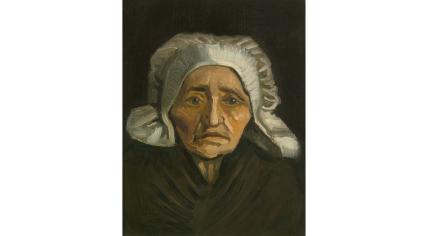
Dutch individuals own up to €9 billion in art; Van Gogh sells for €4.6 mil. at TEFAF
Art has become a popular investment object among Netherlands residents in recent years. Dutch private individuals now own around 7 to 9 billion euros worth of artworks, Investico and De Groen Amsterdammer report based on estimates from three major art insurers.
Art investors bet on profits through increasingly higher auction and resale values. At the TEFAF art fair currently happening in Maastricht, for example, the Vincent van Gogh painting “Tête de paysanne à la coiffe blanche” sold for around 4.6 million euros this week, ANP reported. The last time the painting was sold, at a Sotheby’s auction in New York in 2014, it fetched just over 1.2 million dollars.
Art ownership can also provide a tax benefit - paintings, sculptures, and other artworks are exempt from tax on returns in box 3. In theory, art owners who buy art solely as an investment must pay this tax. But it is up to the Tax Authority to prove who is an art enthusiast and who is an investor - a resource-heavy and complicated task for a government service with limited capacity. It is unclear how much taxes the Dutch treasury is missing out on as a result.
According to insurer Liberty, a large part of the art owned by wealthy Dutch is stored in special vaults in Luxembourg and Switzerland, among others. Some artworks have become so valuable that insurers won’t cover them if they’re hanging on the wall at home and not in a specially secured vault. The number of specialized art vaults in the Netherlands increased from eight to thirteen in the past decade.
The higher and higher prices also make art increasingly inaccessible to museums, museum directors told De Groene Amsterdammer. Not only to purchase, but to borrow and display at all. Insurance and transport costs are calculated based on the painting or sculpture’s current value. Museums can often not afford these costs, making it impossible for them to borrow works of art from other museums or private individuals for an exhibition.
The situation will impact museum visitors, the directors said. Some museums already have to look beyond the big artists when organizing exhibitions. And those who can still afford to bring the big names in may have to charge higher ticket prices for things like the Rijksmuseum’s recent Vermeer exhibit.
Tête de paysanne à la coiffe blanche
The Van Gogh sold at TEFAF this week, the name of which translates to “Head of an old farmer’s wife with a white hat,” was sold to a private museum outside of the European Union, the gallery that sold the painting told ANP. It “will be accessible to the public,” the gallery said. The painting has not been shown as part of a public exhibit since a 1903 exhibition at the Galerie d’Art Oldenzeel in Rotterdam.
It was rumored to have a final price of 4.5 to 4.6 million euros, converting to about 4.9 to 5.0 million dollars. It was priced at 5.5 million dollars ahead of Tefaf, and the organization told ANP the buyer offered close to that sum. The New Orleans gallery that sold the piece, M.S. Rau, refused to disclose the exact price or the name of the private museum that acquired it.
It was last sold at a Sotheby’s auction in New York in 2014, where it fetched just over 1.2 million dollars. It was purchased by a private collector, who then tapped M.S. Rau to collect offers from potential buyers. The gallery noted that the seller needed a night to decide whether they were ready to part ways with the piece.
Van Gogh painted the work around 1884 while living with his parents in the southern Dutch town of Nuenen, the year before he completed his other famous work from the period, “The Potato Eaters”.
The Van Gogh work was painted in 1884 when the painter returned to stay in his family’s home in Nuenen. Van Gogh’s return to the Noord-Brabant town led him to turn his attention to the local residents, and how he could use portraits to depict them with more authenticity. The painting is seen as a forerunner to his better-known work, The Potato Eaters, which was finished a year later.
